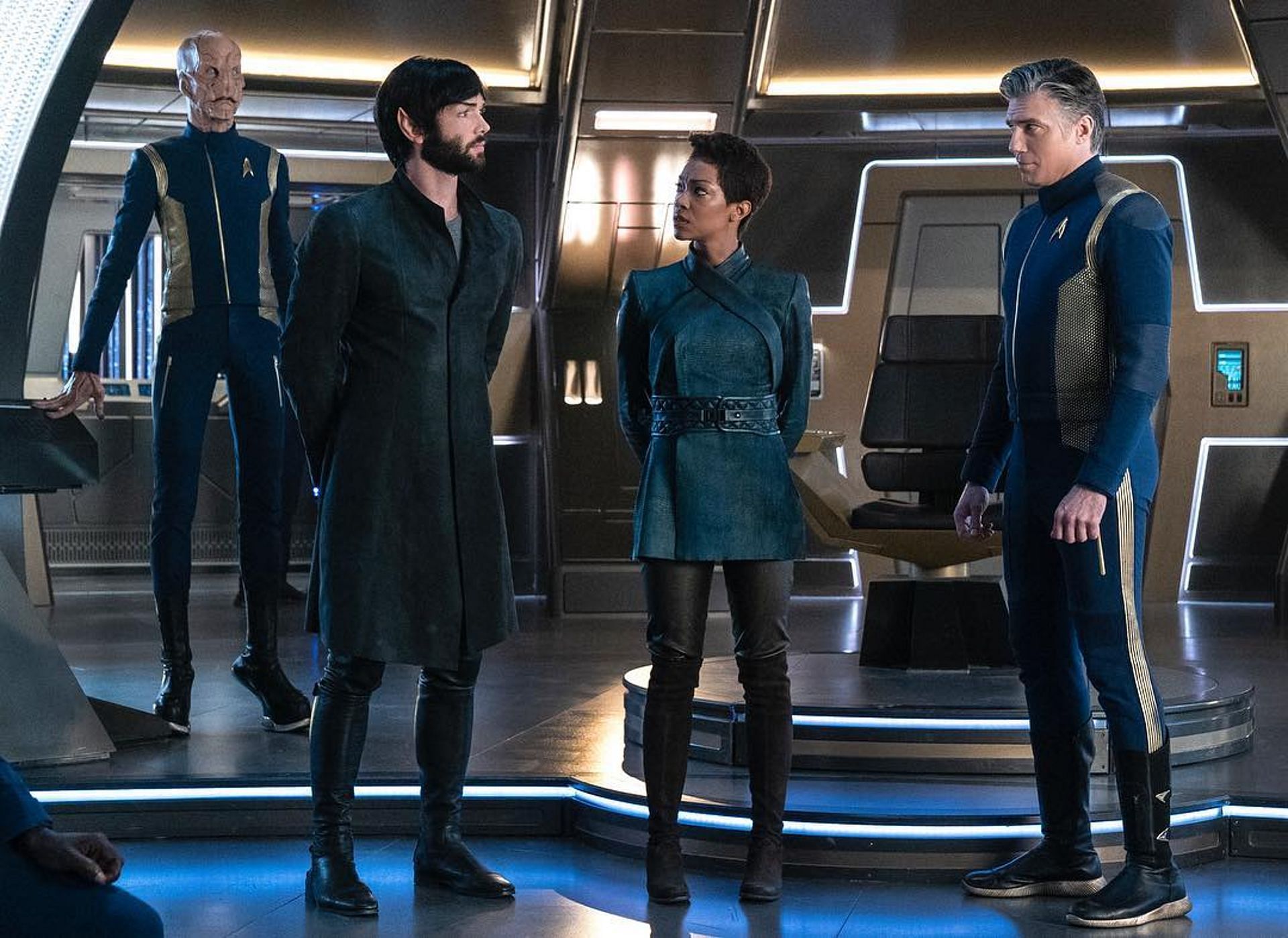
When does Star Trek: Discovery take place? Full timeline explored
Star Trek: Discovery, the addition to the Star Trek saga that premiered in 2017, is set in the Prime Timeline of the Star Trek universe. This places it in line with events leading up to Captain Kirk's command of the starship Enterprise.
The series spans two eras within the Star Trek world, with its initial seasons unfolding in the mid-23rd century and seasons transitioning to the 32nd century. It follows the adventures of Discovery’s crew ten years before Star Trek: The Original Series.
Where does Discovery fit in the Star Trek timeline?
Star Trek: Discovery unfolds within the expansive Prime Timeline of the Star Trek universe, encompassing notable eras such as Star Trek: Enterprise (2151-2161), Star Trek: The Original Series (2265-2269), and Star Trek: The Next Generation (2364-2370).
Set 10 years before Captain Kirk takes over the USS Enterprise, the show focuses on Discovery and its crew's escapades during the 23rd century. Following an event after its season, Commander Michael Burnham (played by Sonequa Martin-Green) leads USS Discovery on a leap 930 years into the future.
Is Star Trek: Discovery set in an alternate timeline?
The series unfolds within the expansive Prime Timeline, representing the furthest known point in the Star Trek universe. The series is divided into two eras: seasons 1 and 2, which take place in the mid-23rd century, about a decade before Captain Kirk takes command of the USS Enterprise.
Season 1 is set in 2256 and 2257 and follows a struggle between the Klingon Empire and the United Federation of Planets. Following the events of the second season, the crew travels to the 32nd century, representing a substantial temporal leap.
Seasons 3, 4, and 5 take place in the distant future, about 900 years from now. Season 3 of Star Trek: Discovery exposes viewers to a fragmented 32nd-century Federation dealing with the aftermath of The Burn, a galaxy-wide calamity.
Is Star Trek: Discovery before Strange New Worlds?
Yes, Star Trek: Discovery precedes Star Trek: Strange New Worlds, serving as a prequel to Star Trek: The Original Series. The events depicted in the first two seasons of Discovery unfold before those in Strange New Worlds. The second season of Discovery is viewed as a backdoor pilot for Strange New Worlds, laying the foundation for the narrative trajectory of the latter series.
How far into the future does Discovery go?
During the second season of Star Trek: Discovery, the USS Discovery goes on a spectacular journey almost 900 years into the future, settling a conflict that alters the 32nd century. This huge leap frees the franchise from the constraints of earlier Star Trek chapters, bringing a new degree of unpredictability and excitement to the story.
The 32nd century, more than 900 years ahead, is a one-way trip with no chance of returning. Advocating for the entire series to follow suit, this brave approach avoids countless possible continuity issues, providing a fresh and unrestricted exploration of the Star Trek universe.
What Star Trek should I watch before Discovery?
Star Trek: Discovery acts as an introduction to Star Trek: The Original Series and includes elements from other parts of the franchise. Opinions vary on how newcomers should watch it for a viewing experience.
It's recommended by some to begin with The Original Series to avoid any confusion about skipping episodes while others suggest sticking to the order of release.
This would involve watching The Original Series and moving on to The Next Generation followed by Deep Space Nine, Voyager, and Enterprise, before exploring Discovery, Picard, and other series within the franchise.
The series is available to stream on Paramount+.